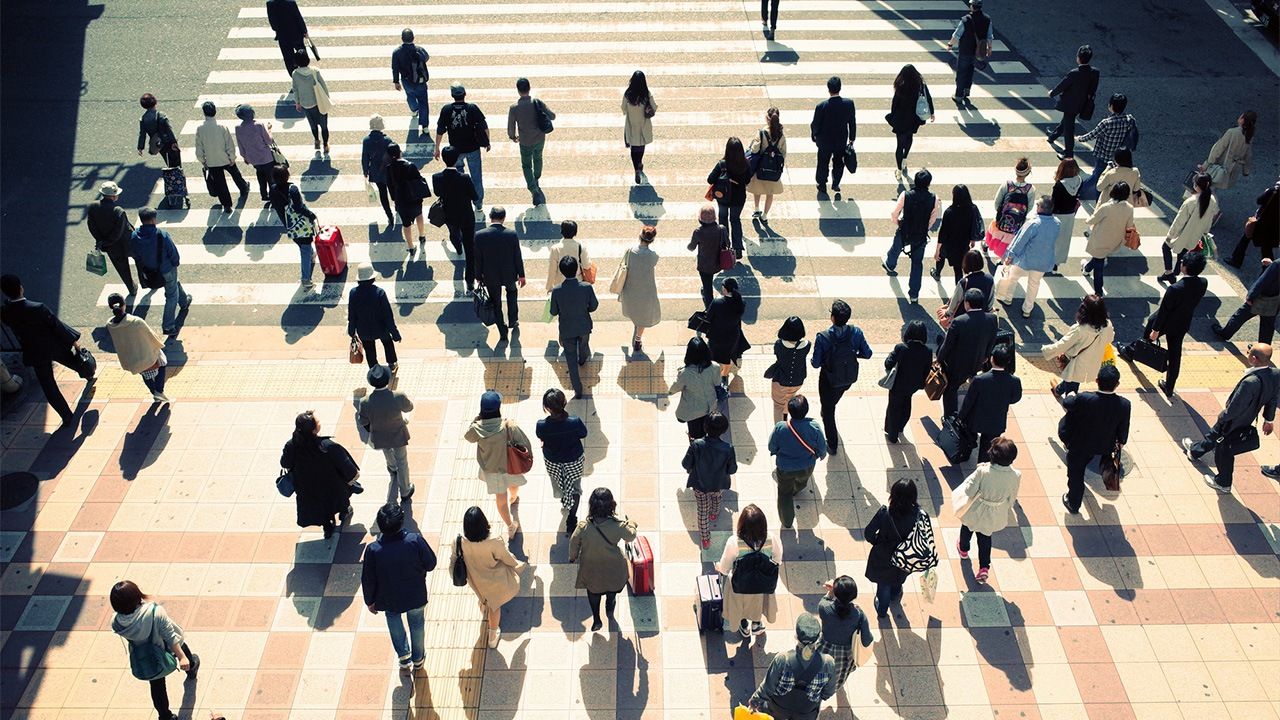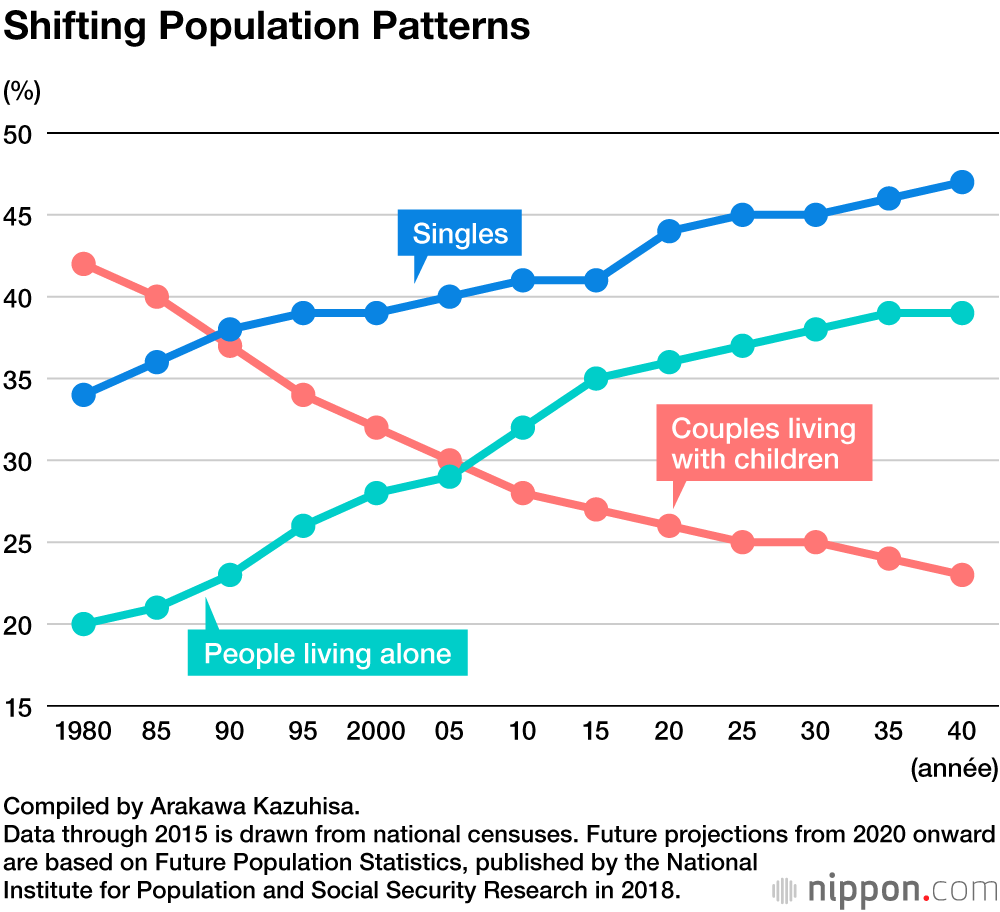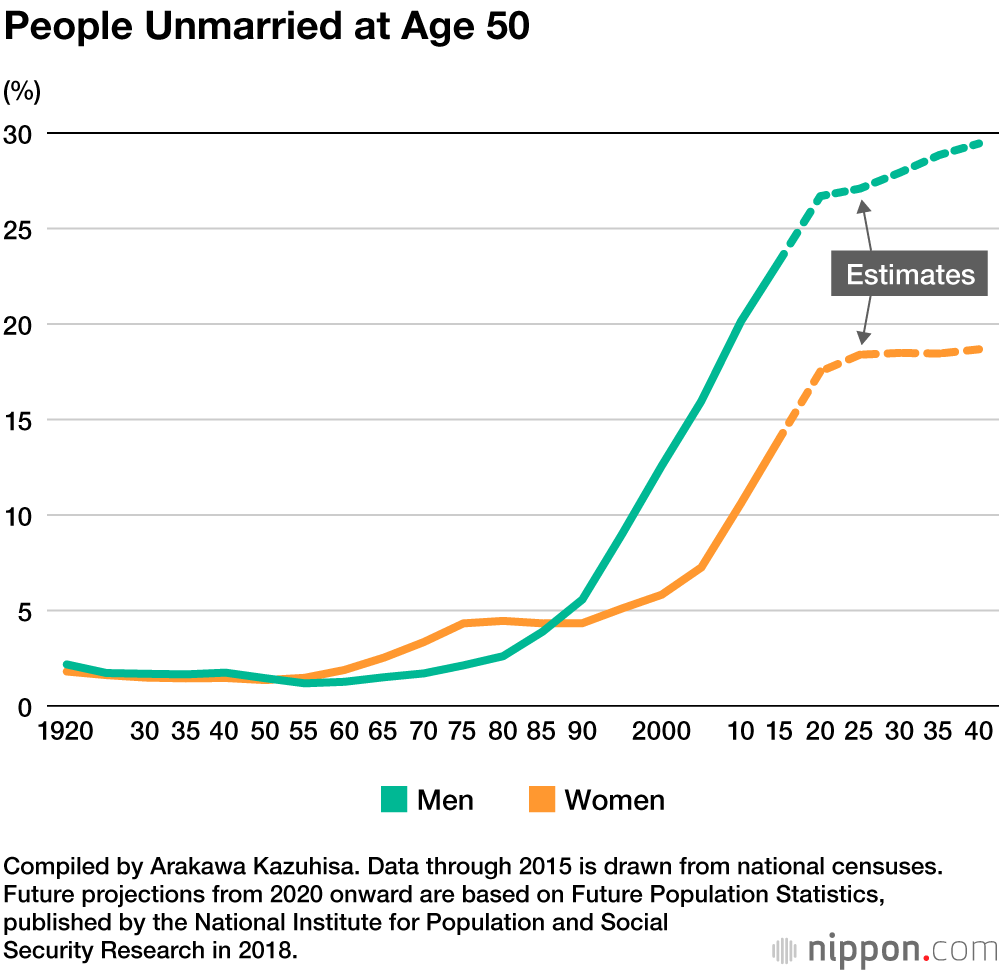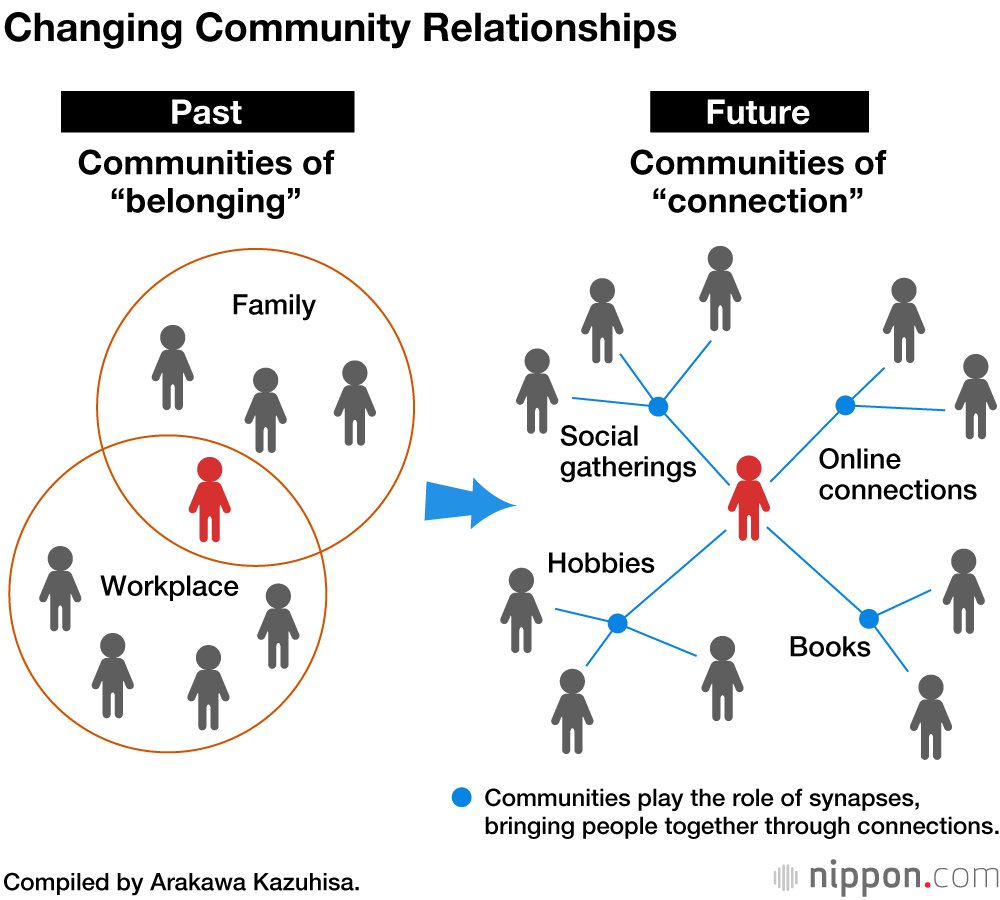
A Community of Connections: Looking Forward to the Solo Society
Society Lifestyle Family- English
- 日本語
- 简体字
- 繁體字
- Français
- Español
- العربية
- Русский
The Rise of the Single Society
As is well known, Japan leads the world in terms of its elderly population. Statistics published in September 2019 show that people aged 65 and older now make up 28.4% of the population, the highest proportion ever and the largest percentage for any country in the world. At the same time, there is another less commonly noticed area in which Japan is likely to lead the world in years to come: its “solo” population of people living alone. According to population forecasts released in 2019 by the National Institute of Population and Social Security Research, by 2040 single people will make up nearly half of the Japanese population (counting as “single” both people who have never married as well as those separated from their spouse by divorce or death). Looking at household composition, meanwhile, single-person households will swell to 39% of the total, while nuclear families consisting of parents and their children will represent just 23% of all households.
This shift in Japanese society started in the 1990s, with a rapid increase in the number of people who remain unmarried at the age of 50. Until recently, this demographic was referred to as “life-long singles,” on the assumption that the odds of anyone getting married for the first time after the age of 50 were practically zero.
For 70 years after Japan’s first population censuses in the 1920s, the percentage of people unmarried at age 50 never rose above 5% for men or women. Until the 1990s, Japanese society was one in which marriage was essentially universal. However, as the graph above shows, the unmarried population started to increase dramatically from 1990, increasing to 23.4% for men and 14.1% for women by the time of the 2015 census. By 2040, it is estimated that one in three men and one in five women will remain unmarried throughout their lives. Proof that this is already happening can be found in the dwindling numbers of new marriages taking place each year. In 1973, 1.1 million couples were married. By 2018, this had fallen almost by half, to just 590,000 marriages.
One of the major reasons for this is the surplus of males among the population: unmarried men outnumber unmarried women by around 3.4 million. This means that many men who would otherwise get married are forced to remain single because they cannot find a partner. This fundamental mismatch lies at the heart of the current situation in Japanese society. And Japan is not the only country to be affected by this phenomenon, which is a growing problem around the world, particularly in developed countries. The situation is particularly acute in China, which now has a “male surplus” of some 30 million people.
Singles and the cultural boom of the Edo period
This trend in the population has prompted a widespread sense of crisis, and many people warn that this rapid increase in the number of unmarried people is unprecedented in Japanese history. But in fact, this is not the first time this phenomenon has occurred. Japan was not always a society in which marriage was all but universal. In fact, a situation in which almost everyone was married arose for the first time following the promulgation of the Meiji-era Civil Law in 1898. Before that, for most of Japanese history, it was not uncommon for people to go through life without getting married. In that sense, there are some surprising points of similarity between the Edo period (1603–1868) and contemporary society.
In 2015, 54% of people aged 20–59 were married. This is similar to the proportion of married people aged 16–60 in 1865, at the very end of the Edo period (according to figures for the Yotsuya Tenma-chō area of Edo/Tokyo). In those days, farmers, merchants, and craftsmen from all around the country were drawn to the capital in huge numbers in search of their fortune. Men outnumbered women two to one—a situation with similarities to the “male surplus” we see in the population today.
Divorce has been common for years in Japan, and one in three marriages today ends in divorce. But this is another area in which the Edo period shows surprising similarities with the modern period. Back then, the crude divorce rate per 1,000 people was 4.8—far higher than the equivalent figure of 4.7 (in 2003) for Russia, the country with the highest rate of divorce in the world today. It is probably safe to say that divorce was more common in Japan than in any other country at the time. The fact that the Tosa domain, now Kōchi Prefecture, issued a decree forbidding people from getting married for the seventh time is indicative of just how rife divorce was in the society.
Some aspects of the culture of the time seem to have flourished precisely because Edo was home to so many single men, with a society in which both marriage and divorce were common. The presence of so many single men unable or unwilling to cook for themselves gave rise to commercial restaurants on a large scale in the seventeenth century, earlier than anywhere else in the world. Carts moved through the city selling familiar items of Japanese cuisine such as sushi, tempura, and soba noodles, giving rise to what we would now call fast food. The izakaya pub/restaurant as a commercial institution also dates to this period.
Singleton gourmets were catered to by leaflets that listed the best restaurants in the city, much like review websites and the Michelin guidebooks today. Men could obtain all the ingredients and prepared meals they wanted without leaving the house, by using traveling merchants who wandered the city selling all kinds of items, just like food delivery services today. The singletons of Edo developed a style of consumption that liberated them from the need to own possessions and freed them to borrow them on an as-needed basis—just like today’s “sharing” economy.
There were even early prototypes of the “idols” and maid cafes that are part of the contemporary scene in Akihabara today. It was during this period that ukiyo-e paintings of courtesans and other desirable women became popular. The yellow-backed kibyōshi that were the precursors to modern manga also date from this time. Many men in Edo remained unmarried throughout their lives and did not leave any descendants behind. Instead, their legacy was the various forms of popular culture that are enjoyed around the world today.
Japan is a famous as an apparently inexhaustible source of otaku culture. Manga, anime, and cosplay have moved far from their Japanese roots and become popular around the world. The hologram “singer” Hatsune Miku, the world’s first “virtual reality idol,” is another Japanese innovation. It is more or less a given that any society with large numbers of single people will give rise to a consumer culture that serves as an alternative route to happiness for people without families. This was true in Edo three centuries ago and remains true in Tokyo today.
The idea that everyone should get married and the assumption that married couples will stay together for the rest of their lives is a recent innovation with a history of little more than 100 years. The situation we see today, marked by a high percentage of single people and widespread divorce, is in fact a reversion to what was the norm throughout most of Japanese history. The shift to a solo society is not unprecedented; previous generations have already lived through this.
From Communities of Belonging to Communities of Connections
In the years to come, we will inevitably see an increasing tendency toward a more fractured society built around single-cell individuals living alone. There will be a shift from a solid or stable society to a more “liquid” modernity, to borrow the Polish sociologist Zigmunt Bauman’s terminology. Formerly dominant communities based on region, workplace, and the family will fuse and melt, ending the myth that a person can be secure so long as he or she remains safety within a group. Today, many young people experience a hard-to-articulate sense of isolation and unease within such groups—and indeed, it often seems to be precisely when they are surrounded by large numbers of people that they feel most anxious. The real issue that should concern us is not physical but psychological isolation. There is no longer any guarantee, if there ever was, that merely belonging to a group will bring a sense of security.
In a solo society where 50% of the population is single and 40% of people live alone, it will be essential for people to develop the ability to achieve happiness by living successfully on their own. This does not mean the ability to survive in splendid isolation. Paradoxically, a successful solo life means having the strength to connect with other people.
People tend to assume that “connections” means making friends, but that is not what I mean. Nor is it a case of needing to belong to a “community” of some kind. It is not necessary to go to lengths to belong—and belonging in this sense will not necessarily lead to a sense of security and comfort. The vital thing in the years to come, I believe, will be to understand that even without that sense of belonging, relatively brief moments of contact with other people can be enough on their own provide a sense of psychological ease, even if you don’t belong to any community.
I think we will see a shift from communities built on “belonging” to a new model built on “contacts.” The way in which we relate to communities will change. People are always ready to establish contact with people who share their values or make them feel appreciated and welcome. This is important, but excessive dependence on this kind of relationship can ultimately result in excessive pressure and make people feel stifled and uncomfortable. I think it is worth making the effort to go out of our way to establish contacts with people who have different values and different ways of thinking, and to create opportunities for contact with people from different generations. This relates to what the American sociologist Mark Granovetta has called “the strength of weak ties.” Granovetta argues that our “weak” ties with acquaintances are more important in terms of benefits and stimulation than the “strong” ties we have with close friends and family.
In the future, our idea of community is likely to change from one focused on security within a self-contained bubble to one that emphasizes the importance of multiple points of contact with the outside world: a community of contacts. Communities are like the synapses in our nervous systems—numerous points of contact, and beyond them, vast networks made up of unknown individuals. With the internet, it is even possible to connect to the entire world.
Connections with other people via these points of contact can help to reenergize self in sometimes unexpected ways. A community in this sense represents liberation from the gilded cage of the communities we used to know, in which individuals were often confined within the safe-but-stifling limitations of family and workplace. In these new communities, we will no longer be dependent on the family and workplace as our sole resorts of security. This will result in a diversification and widening of our own social roles. This new perspective is one that can be helpful and necessary not only for singletons but for married people as well.
This is what I mean when I talk about building new families within an individualizing society. In the future, individuals will be connected at points of contact that join to form lines, or threads, that are then stitched together to form a vast social fabric. This will be a society in which people who share the same ways of thinking and values can be connected and support one another, even without ties of blood or living under the same roof. This type of society, made up of an interconnected web of extended families, is my vision for a freer, more diverse future.
(Originally published in Japanese. Banner photo © Pixta.)


